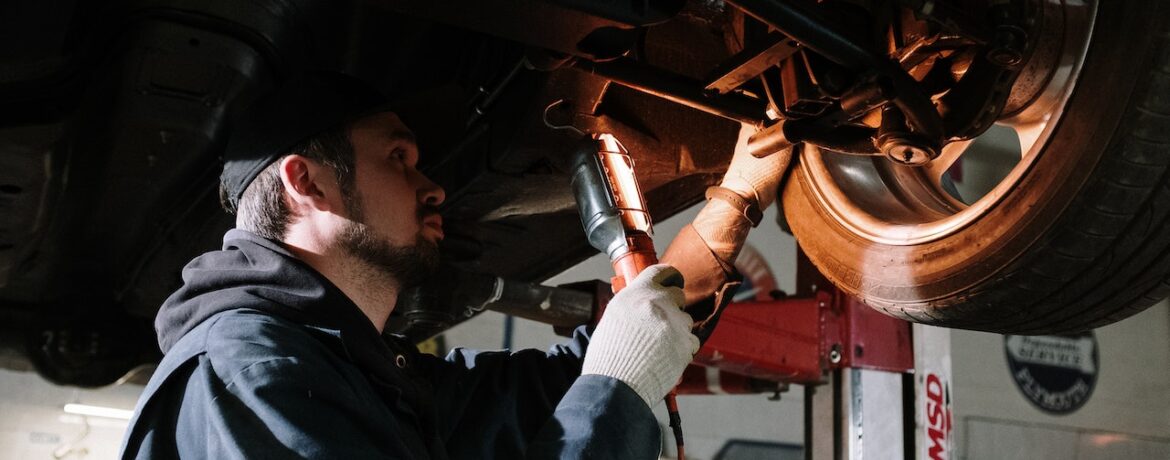Customizing a car is a trend that has been around for decades. From hot rods to muscle cars, car enthusiasts have always found ways to turn their rides into a masterpiece. Car customization is an art that requires a blend of creativity, technical skills, and a passion for cars. In this article, we will discuss the different aspects of car customization and how you can turn your ride into a masterpiece.
Introduction to Car Customization
Car customization is the process of modifying a car’s appearance or performance to suit an individual’s preferences. It can range from simple cosmetic upgrades, such as adding a spoiler or new rims, to complex performance upgrades, like engine swaps or turbocharging. Car customization has become increasingly popular in recent years, with enthusiasts looking for ways to make their rides stand out from the crowd.
The History of Car Customization
Car customization has been around since the early days of the automobile. The first hot rods were created in the 1930s by young men who modified their cars for speed and style. In the 1950s, custom cars became popular with the rise of rock and roll culture. The 1960s and 1970s saw the emergence of muscle cars, which were often modified for drag racing. Today, car customization has evolved into a multi-billion dollar industry, with enthusiasts around the world modifying their rides in unique ways.
Benefits of Car Customization
Car customization has several benefits, including:
- Personalization: Customizing a car allows you to express your personality and style.
- Improved Performance: Performance upgrades can improve a car’s speed, handling, and braking.
- Increased Resale Value: Customized cars often have a higher resale value than stock cars.
- Unique Appearance: Customized cars stand out from the crowd and can attract attention.
Types of Car Customization
Car customization can be divided into two main categories: cosmetic upgrades and performance upgrades.
Cosmetic Upgrades
Cosmetic upgrades are modifications made to a car’s appearance. They can range from simple changes, such as adding decals or painting the car a different color, to more complex changes, such as body kits or custom paint jobs.
Exterior Upgrades
Exterior upgrades are modifications made to the outside of the car. They can include:
- Body Kits: Body kits are sets of aftermarket parts that modify a car’s appearance. They can include front and rear bumpers, side skirts, and spoilers.
- Wheels and Tires: Upgrading the wheels and tires can change the look of a car and improve handling.
- Paint Jobs: Custom paint jobs can range from simple two-tone designs to complex graphics and airbrushing.
- Decals and Stickers: Adding decals and stickers can personalize a car and make it stand out.
Interior Upgrades
Interior upgrades are modifications made to the inside of the car. They can include:
- Upholstery: Upgrading the seats and interior upholstery can improve comfort and appearance.
- Sound Systems: Upgrading the car’s sound system can improve the listening experience.
- Lighting: Adding custom lighting can improve the appearance of the interior.
Performance Upgrades
Performance upgrades are modifications made to a car’s engine, suspension, or brakes. They can improve a car’s speed, handling, and braking.
Engine Upgrades
Engine upgrades can include:
- Cold Air Intakes: Cold air intakes improve airflow to the engine, which can increase horsepower.
- Exhaust Systems: Upgrading the exhaust system can improve engine performance and sound.
- Turbochargers and Superchargers: Turbochargers and superchargers can increase horsepower and torque.
Suspension Upgrades
Suspension upgrades can include:
- Lowering Springs: Lowering springs can improve handling and appearance.
- Coilovers: Coilovers are adjustable suspension components that allow for the customization of ride height and handling performance.
- Sway Bars: Sway bars improve handling by reducing body roll during cornering.
Brake Upgrades
Brake upgrades can include:
- Brake Pads and Rotors: Upgrading the brake pads and rotors can improve stopping performance.
- Brake Calipers: Upgrading the brake calipers can improve brake performance and appearance.
- Brake Lines: Upgrading the brake lines can improve brake feel and reduce brake fade.
Choosing the Right Customizations
Choosing the right customizations for your car can be challenging. It’s essential to consider your budget, intended use, and personal preferences when deciding what modifications to make. Here are some tips to help you choose the right customizations for your car:
- Research: Do your research before making any modifications. Look for reviews and feedback from other car enthusiasts to get an idea of what modifications work well for your car.
- Budget: Set a budget for your customizations and stick to it. It’s easy to overspend on modifications, so it’s essential to be mindful of your finances.
- Intended Use: Consider your car’s intended use when choosing modifications. If you plan on racing your car, performance upgrades may be more important than cosmetic upgrades.
- Personal Preferences: Choose modifications that suit your personal style and preferences. After all, car customization is about personal expression and making your car unique.
DIY Car Customization
DIY car customization is an excellent way to save money and learn new skills. However, it’s important to have the right tools and knowledge before attempting any modifications. Here are some tips for DIY car customization:
- Research: Do your research before attempting any modifications. Make sure you understand the process and have the necessary tools and skills.
- Safety: Always prioritize safety when working on your car. Wear protective gear and work in a well-ventilated area.
- Start Small: If you’re new to car customization, start with small modifications and work your way up to more complex projects.
- Get Help: Don’t be afraid to ask for help from more experienced car enthusiasts or professionals.
Conclusion
Car customization is an art that requires a blend of creativity, technical skills, and a passion for cars. Whether you’re looking to improve performance, appearance, or both, there are endless customization options available. Remember to choose modifications that suit your personal style and preferences, and always prioritize safety when working on your car.
FAQs
- What are some affordable cosmetic upgrades I can make to my car?
- There are several affordable cosmetic upgrades you can make to your car, such as adding a vinyl wrap, installing new seat covers, adding a steering wheel cover, or adding a decal or sticker. These upgrades can help personalize your car and give it a unique look without breaking the bank.
- Are performance upgrades always worth the investment?
- Performance upgrades can be worth the investment if you’re looking to improve your car’s speed, handling, or braking performance. However, it’s essential to research the specific upgrades you’re considering and make sure they’re compatible with your car. Additionally, it’s important to consider the cost of the upgrades and whether they fit within your budget.
- How can I learn more about DIY car customization?
- There are several resources available for learning more about DIY car customization, such as online forums, YouTube tutorials, and car enthusiast groups. It’s also helpful to invest in some basic tools and start with small projects before attempting more complex modifications.
- Can car customization affect my insurance rates?
- Car customization can potentially affect your insurance rates, depending on the specific modifications you make. Performance upgrades, in particular, can increase your insurance rates, as they may increase the likelihood of an accident. It’s important to notify your insurance company of any modifications you make to your car and to ensure that you have adequate coverage.
- Are there any legal restrictions on car customization?
- Yes, there are legal restrictions on car customization. Each state has its own regulations regarding modifications to vehicles, and it’s essential to research these regulations before making any modifications. Additionally, certain modifications may not be street legal, and it’s important to ensure that your car complies with all relevant laws and regulations.

